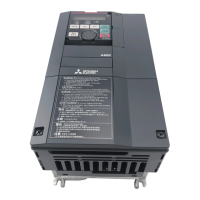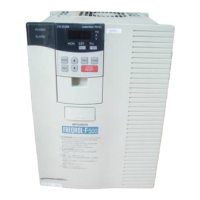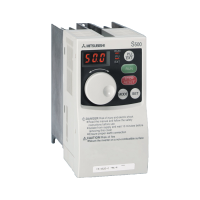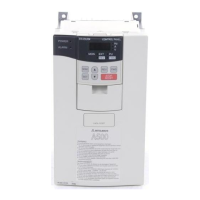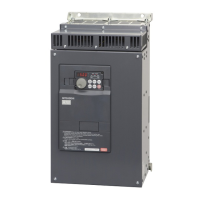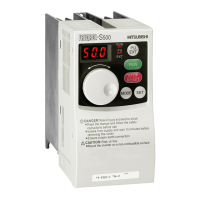A-1
Thank you for choosing this Mitsubishi Inverter option unit.
This instruction manual gives handling information and precautions for use of this equipment.
Incorrect handling might cause an unexpected fault. Before using the equipment, please read
this manual carefully to use the equipment to its optimum performance.
Please forward this manual to the end user.
1. Electric Shock Prevention
2. Fire Prevention
3. Injury Prevention
This section is specifically about safety matters
Do not attempt to install, operate, maintain or inspect this product until you have read through
this instruction manual and appended documents carefully and can use the equipment
correctly. Do not use this product until you have a full knowledge of the equipment, safety
information and instructions.
In this instruction manual, the safety instruction levels are classified into "WARNING" and
"CAUTION".
Assumes that incorrect handling may cause hazardous conditions,
resulting in death or severe injury.
Assumes that incorrect handling may cause hazardous conditions,
resulting in medium or slight injury, or may cause physical damage
only.
Note that even the level may lead to a serious consequence according to conditions.
Please follow the instructions of both levels because they are important to personnel safety.
WARNING
CAUTION
CAUTION
SAFETY INSTRUCTIONS
WARNING
•
While power is on or when the brake unit is
running, do not open the front cover. You
may get an electric shock.
•
Do not run the brake unit with the front
cover removed. Otherwise, you may access
the exposed high-voltage terminals and
charging part and get an electric shock.
•
Even if power is off, do not remove the front
cover except for wiring or periodic
inspection. You may access the charged
inverter connected to the brake unit and get
an electric shock.
•
Before starting wiring or inspection, check
to make sure that the 3-digit LED brake unit
monitor is off, wait for at least 10 minutes
after the power supply has been switched
off, and check to make sure that there are
no residual voltage using a tester or the
like. The brake unit connected to the brake
unit is charged with high voltage for some
time after power off and it is dangerous.
•
Must be earthed (grounded).
•
Any person who is involved in the wiring or
inspection of this equipment should be fully
competent to do the work.
•
Always install the brake unit before wiring.
Otherwise, you may get an electric shock or
be injured.
•
Do not operate a switch with wet hands.
You may get an electric shock.
•
Do not subject the cables to scratches,
excessive stress, heavy loads or pinching.
Otherwise you may get an electric shock.
CAUTION
• Mount the brake unit and resistor unit to
incombustible material. Installing it to
combustible materials directly or near
combustible materials can cause a fire.
• Turn off power when an alarm signal is
output. Otherwise, the brake resistor may
excessively overheat due to damage of the
brake transistor and such, causing a fire.
• Do not connect the resistor unit directly to
the DC terminals P/+ and N/-. This could
cause a fire.
CAUTION
• Apply only the voltage specified in the
instruction manual to each terminal.
Otherwise, burst, damage, etc. may occur.
• Ensure that the cables are connected to
the correct terminals. Otherwise, burst,
damage, etc. may occur.
• Always make sure that polarity is correct
to prevent damage, etc. Otherwise, burst,
damage may occur.
• While power is on or for some time after
power-off, do not touch the brake resistor as
it will be extremely hot. Doing so can cause
burns.

